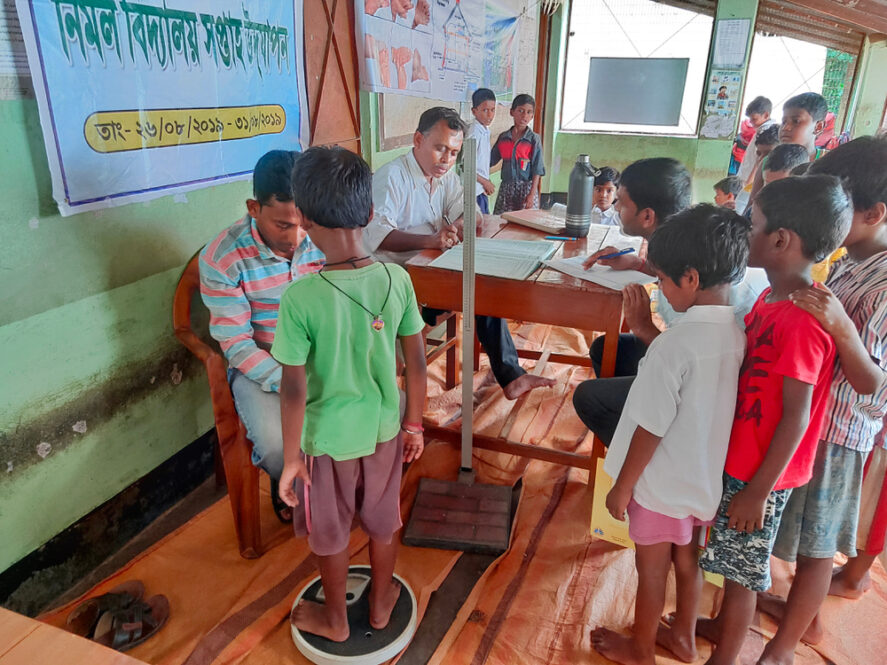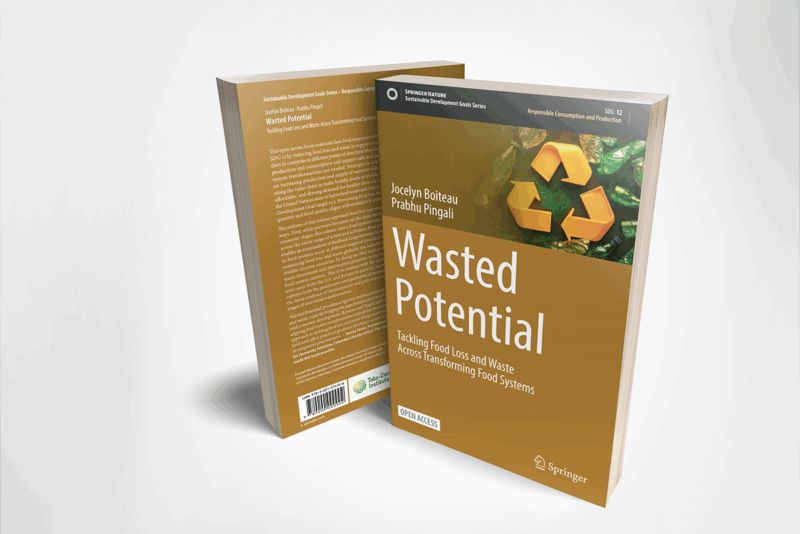Interministerial Coordination Can Boost India’s Fight Against Anemia

A new Tata-Cornell Institute for Agriculture and Nutrition (TCI) study on the impact of government nutrition and sanitation programs on anemia in India underscores the importance of a systemic approach that leverages all available pathways to reducing the disease.
In a study published in the journal Applied Economic Perspectives and Policy, Soumya Gupta, Payal Seth and TCI Director Prabhu Pingali assessed the impact of two government interventions, the nutrition program Anemia Mukt Bharat (Anemia-Free India) and Swachh Bharat Mission (Clean India Mission), a sanitation program intended to eliminate open defecation. According to the study, children who received benefits from both programs had higher blood hemoglobin levels than those who received only one. Combining the two programs could bring as many as 6,700 children out of anemia.
“Public health concerns like anemia have multiple causes, from poor diets to unsanitary environments,” said Gupta, an alumna of TCI. “Our study shows that tackling both causes simultaneously can significantly improve health outcomes for children, underscoring the need for increased coordination between the government ministries in charge of programs that address the issue.”
Characterized by insufficient healthy red blood cells or hemoglobin, anemia causes impaired cognitive and developmental outcomes. The condition has a variety of causes, including iron or vitamin deficiency from poor diets. Infections from fecal contamination can also contribute to anemia by inhibiting the absorption of nutrients.
Anemia was on the decline in India from 2005-2015 but has rebounded in recent years. In 2020, an estimated 67% of Indian children under 5 were anemic. The Indian economy loses about 1.3% of GDP each year due to the condition.
“The Ministries of Health and Family Welfare and Drinking Water and Sanitation could boost their efforts by adopting joint health goals, coordinating the activities of community-level workers, and sharing data from Anemia Mukt Bharat and the Swachh Bharat Mission,” [Gupta] said.
Anemia Mukt Bharat was launched in 2018 with the aim to reduce anemia by 3% per year in target populations, including children under 5. The program focuses on six key intervention areas: iron supplementation, deworming, behavior change communication campaigns, anemia testing with point-of-care treatment, mandatory provision of iron-fortified foods in public health programs, and the remedy of non-nutritional causes of anemia, like malaria.
India created the Swachh Bharat Mission in 2014, with the goal of ending open defecation by 2019. More than 100 million toilets were built as part of the program, which was complemented by behavior change communication campaigns promoting sanitary practices. Although India says that it is now open-defecation-free, surveys show that the practice is still in use, especially in rural areas.
The TCI researchers used data from India’s National Family Health Survey (NFHS) to analyze the effects of each program on the hemoglobin levels of children under three. According to their analysis, children who received at least one intervention under Anemia Mukt Bharat had 0.06 g/dl higher hemoglobin levels. Among children who received improved sanitation facilities under the Swachh Bharat Mission and whose communities’ open defecation rates fell below 40%, hemoglobin levels were 0.12 g/dl higher than those who were not reached by the intervention. In contrast, hemoglobin levels were 0.08–0.23 g/dl higher in children receiving interventions from both programs.
Hemoglobin levels below 11 g/dL are considered anemic. The researchers estimate that 2,100–6,700 children are 0.08–0.23 g/dL below the 11 g/dL threshold and could be raised out of anemia by receiving interventions from both programs.
“The Ministries of Health and Family Welfare and Drinking Water and Sanitation could boost their efforts by adopting joint health goals, coordinating the activities of community-level workers, and sharing data from Anemia Mukt Bharat and the Swachh Bharat Mission,” [Gupta] said.
The researchers said that their results underscore the importance of how health-related programs are implemented, urging policymakers to address determinants of child health comprehensively and ensure that efforts are well-coordinated between the ministries involved. Anemia Mukt Bharat is led by India’s Ministry for Health and Family Welfare. The Ministry of Drinking Water and Sanitation was envisaged as a partner, but Gupta said that it is unclear how its role has been integrated into program activities.
“The Ministries of Health and Family Welfare and Drinking Water and Sanitation could boost their efforts by adopting joint health goals, coordinating the activities of community-level workers, and sharing data from Anemia Mukt Bharat and the Swachh Bharat Mission,” she said.
In their analysis, the researchers found that the impact of receiving interventions from both programs differed among socioeconomic groups. Middle income households saw the strongest effect, while the impact was insignificant for the richest households. Similarly, the effect was larger for urban families compared to those from rural areas.
Gupta said that policymakers should design programs to address the specific needs of different groups and account for the differences between implementation in rural and urban contexts. “Mobile healthcare services and community-based interventions can help reach remote rural areas,” she said.
The researchers also found that the positive effect of the programs is negated if a child’s mother is anemic. This suggests that integrating maternal health services into child health programs can be an effective way to bolster children’s health outcomes.
“As researchers, our findings are only as strong as the data we have to work with,” Gupta said. “With more accurate, comprehensive data, we can help to develop stronger programs to mitigate anemia.”
In the study, the researchers noted two potential issues with the quality of the available data on anemia in India. First, the NFHS uses finger pricks to test for hemoglobin levels, but studies have shown that this method can overestimate anemia rates compared to blood samples taken directly from veins. Surveys relying on venous sampling have shown lower anemia rates in India than the NFHS.
They also argued in favor of surveying additional biomarkers beyond hemoglobin, which could be used to discern how much anemia is caused by iron deficiency and how much is caused by other factors. In their study, the researchers found a negative association between children’s iron supplementation and hemoglobin levels, which could indicate that a prevalence of anemia is not due to iron deficiency alone.
Seth and Gupta raised similar issues with India’s anemia data in an op-ed published in The Indian Express in September 2022.
“As researchers, our findings are only as strong as the data we have to work with,” Gupta said. “With more accurate, comprehensive data, we can help to develop stronger programs to mitigate anemia.”
Questions related to anemia were dropped from the NFHS in 2023 due to concerns about the accuracy of the results. Instead, anemia estimates will be gathered as part of another survey, the Diet and Biomarkers Survey in India (DABS-I).
Feature image: Doctors weigh children at a school in West Bengal, India. (Photo by SOMNATH MAHATA/Shutterstock)





